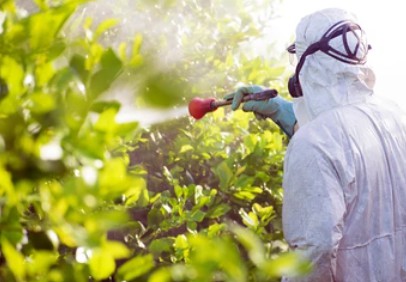Development of Botanical Photo-activated Pesticides
Botanical photo-activated toxins are diverse and widely distributed. It can kill insects, inhibit bacteria, and prevent virus infection, which is a manifestation of plants' defenses in nature's long-term evolution. The development of this class of pesticides can effectively control the harmful effects of pests and alleviate the environmental pressure caused by many chemical and synthetic pesticides.
Lifeasible is committed to providing various effective solutions for biopesticide development. Our in-depth research on botanical photo-activated pesticides will help promote the development of pesticide research. We will provide theoretical value and application prospects for pesticide development.

Characteristics of botanical photo-activated pesticides
Compared to traditional pesticides, botanical photo-activated pesticides have many incomparable advantages to their traditional counterparts, including the following.
- With high environmental compatibility, botanical photo-activated pesticides can improve insecticide efficacy and avoid persistent residues in the environment; it can meet the requirements of environmental harmony for pollution-free pesticides.
- With superior selectivity and low toxicity to non-target organisms.
- Slow resistance development or no cross-resistance in pest control.
What do we offer?
- Plant source screening. We screen the plants to find potential plant sources that produce photoactivated toxins. This can be guided by fieldwork, literature research, and traditional herbology knowledge. Modern techniques can also apply high-throughput screening methods, such as chemical combination-based and in vitro cell model screening, to speed up the screening process.
- Toxin extraction and purification. Once a potential plant source has been identified, photoactivated toxins need to be extracted from the plant. This usually involves plant sample collection, sample pretreatment, and toxins extraction. Extraction methods include solvent extraction, ultrasonic extraction, microwave-assisted extraction, etc. After extraction, toxins are purified from complex plant extracts by various separation and purification techniques such as chromatography (e.g., column chromatography, high-performance liquid chromatography), gel electrophoresis, and crystallization.
- Structural identification. Structural identification of light-activated toxins obtained from purification is crucial. This can be done using a variety of techniques, including nuclear magnetic resonance (NMR) spectroscopy, mass spectrometry (MS) analysis, infrared spectroscopy (IR), and ultraviolet-visible spectroscopy (UV-Vis). A combination of these techniques can determine the molecular formula, structure, and functional groups of the toxin.
Advantages of our services

Lifeasible has a clear advantage in the development of plant-derived biopesticides. Through our comprehensive and effective solutions, we have been instrumental in helping numerous research efforts to develop green pesticides that are truly efficient against pests and non-polluting to the environment. If you are interested in us, please feel free to contact us.
For research or industrial raw materials, not for personal medical use!

